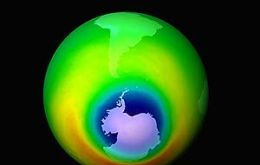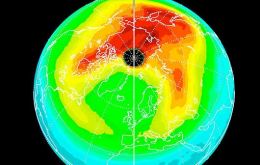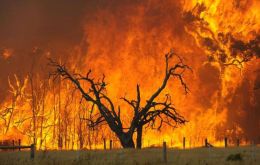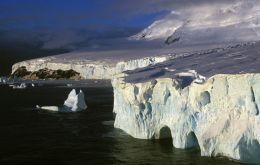MercoPress. South Atlantic News Agency
Tag: ozono
-
Saturday, October 22nd 2011 - 10:49 UTC
Ozone hole over Antarctica reached its ninth largest on record in September

The Antarctic ozone hole, which yawns wide every Southern Hemisphere spring, reached its annual peak on September 12, stretching 10.05 million square miles, the ninth largest on record and equivalent to three times the area of Brazil: 3.3m.
-
Monday, October 3rd 2011 - 07:14 UTC
“Ozone hole” over the Arctic claims NASA; blames long spell of cold weather

Ozone loss over the Arctic this year was so severe that for the first time it could be called an “ozone hole” like the Antarctic one, scientists report. About 20km above the ground, 80% of the ozone was lost, they say.
-
Sunday, April 24th 2011 - 01:05 UTC
Antarctica ozone hole linked to Australia’s recent series of droughts

The Antarctic ozone hole is about one-third to blame for Australia's recent series of droughts, scientists say. Writing in in the journal Science, they conclude that the hole has shifted wind and rainfall patterns right across the Southern Hemisphere, even the tropics.
-
Wednesday, April 6th 2011 - 06:25 UTC
Unprecedented damage to the ozone layer over the Arctic, says WMO

The ozone layer has seen unprecedented damage in the Arctic this winter due to cold weather in the upper atmosphere. By the end of March, 40% of the ozone in the stratosphere had been destroyed, against a previous record of 30%.
-
Friday, February 18th 2011 - 04:17 UTC
Ozone layer future recovery linked to climate change, says reports

A report sponsored by the UN Environment Program finds that over the past decade, global ozone levels, and ozone levels in the Arctic and Antarctic regions are at a turnaround point -- no longer decreasing but not yet increasing.
-
Saturday, December 4th 2010 - 00:34 UTC
Ozone hole over Antarctica smallest in five years, says NZ research centre

The ozone hole over Antarctica has shrunk to the smallest in five years, according to a New Zealand’ National Institute of Water and Atmospheric Research, NIWAR. The hole decreased in size to about 22 million square kilometres from 24 million square kilometres last year, said Auckland-based NIWAR in an e-mailed statement today.
-
Thursday, September 16th 2010 - 21:27 UTC
Efforts to protect ozone layer from depletion have been successful, says UN

International efforts to protect the ozone layer shielding life on Earth from harmful levels of ultraviolet rays have stopped additional ozone losses, potentially averting scores of millions of cases of skin cancer and eye cataracts, according to a new United Nations report released today.
